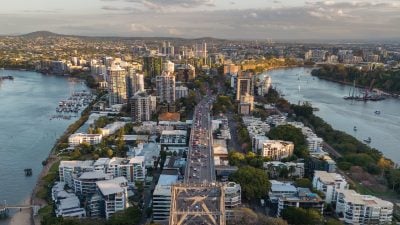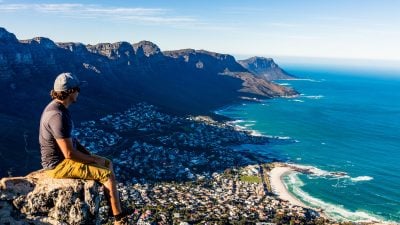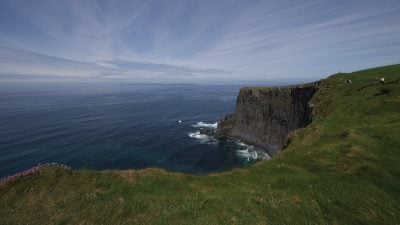Home / Latin America & Antarctica / Exploring the Sacred Valley of…
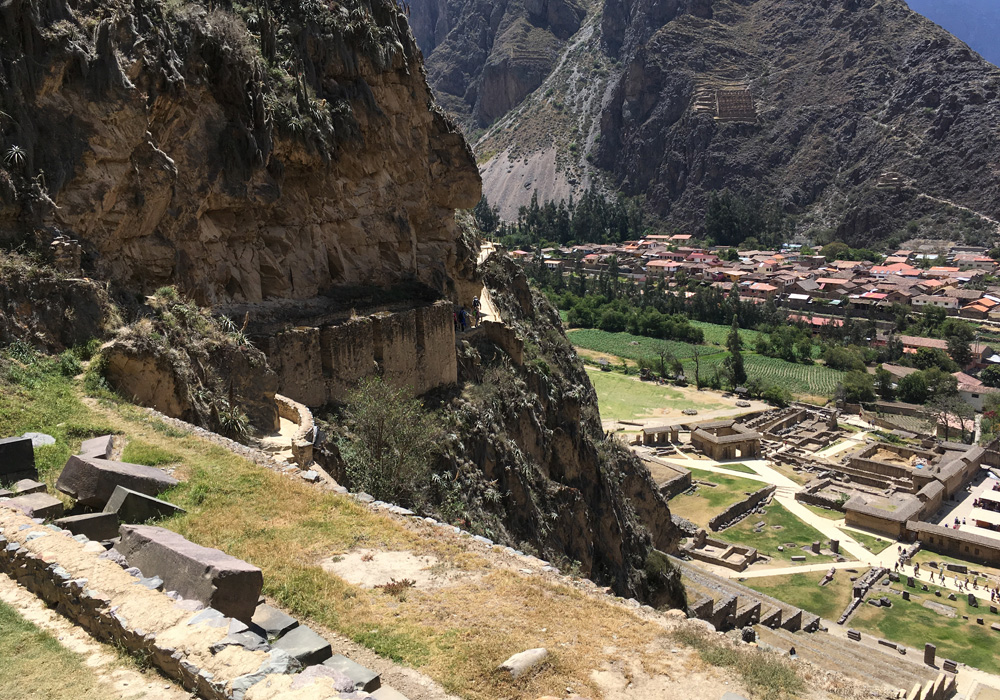
Exploring the Sacred Valley of the Incas on Peru Tours
If you’re visiting Peru, chances are the centrepiece of your trip is Machu Picchu, the incredible lost city in the heart of the Peruvian Andes. To get to Machu Picchu on Peru tours, you’ll have to travel through the Sacred Valley of the Incas, either connecting directly by train or hiking the Inca Trail, heading through the mountains. In the Sacred Valley, all roads lead to Machu Picchu. But that doesn’t mean you should forget the rest of the valley; there’s more to the Sacred Valley than its most-famous landmark.
When I travelled to the Sacred Valley of the Incas, I was lucky to spend a few days seeing Inca sites like Ollantaytambo, Maras, and Moray. If I had had more time, I would’ve also explored Pisac and the famous markets of Chinchero. While Machu Picchu is deservedly the focus of a trip to the Sacred Valley on Peru tours, you should plan to spend a few days in the valley acclimatizing to the high altitude and seeing some of the incredible Inca ruins that aren’t called “Machu Picchu.” The valley is full of several wonders, and you’re missing out if you restrict yourself to only South America’s greatest lost city.
Practicalities about Visiting
Many of the sites of the Sacred Valley are not far from Cusco, so you can easily stay in the city while exploring the valley if you’re fine with spending a couple hours in the car each day. However, I’d recommend picking a spot in the valley to base yourself out of. During my time in the valley I stayed at Aranwa Sacred Valley, and if you can afford it, I’d recommend you do the same. Located just to the east of the town of Urubamba, Aranwa Sacred Valley is a gorgeous hotel (it’s almost more of a resort) with a variety of massive rooms set across its manicured property. There’s an old colonial church in the centre of the property that makes for a nice photo op, while the massive spa (apparently the largest in South America) could pamper you all day long with massages and wellness treatments. There’s a good restaurant on-site and there are even alpacas that graze on the grassy mounds right outside the lobby. It’s about as ideal an accommodation as you can find anywhere in the world and possibly the nicest hotel I’ve ever stayed at.
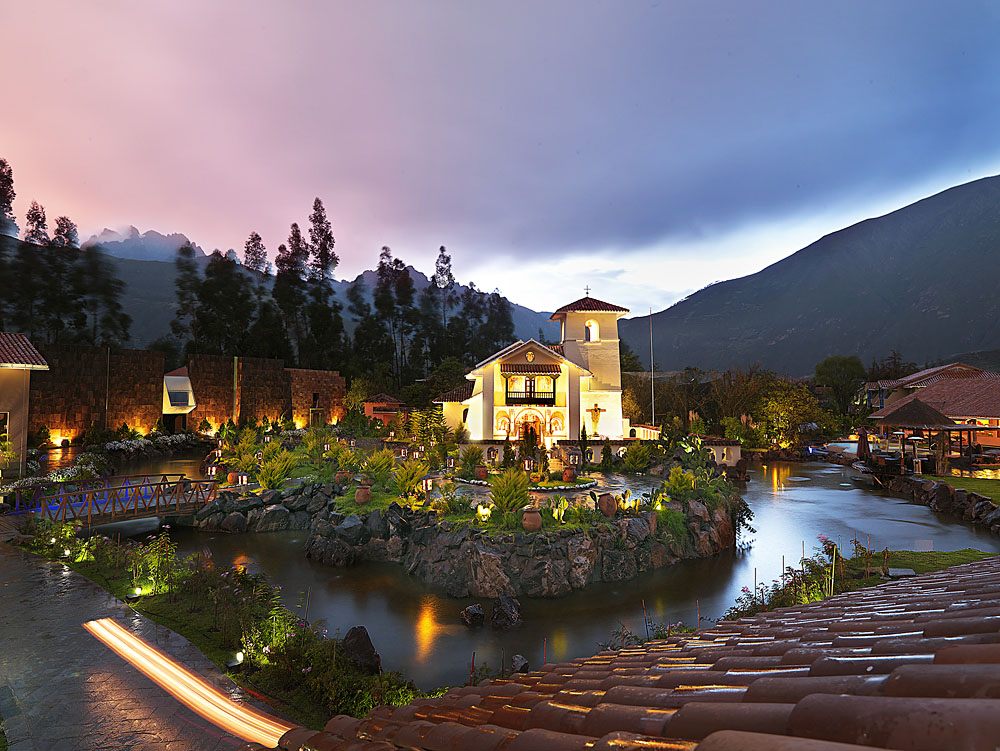
Regardless of where you stay, being in the valley will save you time each day and give you convenient access to the archaeological sites throughout the valley. It’s also important to know that you’ll need to purchase a boleto turistico to visit many of these sites. A ticket costs 130 PEN (around 50 CAD) and lasts 10 days. It includes entry to popular archeological sites like Ollantaytambo, Pisac, Moray, and Chinchero, while also including spots in and around Cusco, such as the ruins of Sacsayhuaman and the Museum of Regional History. There’s no way of getting around buying the boleto if you want to visit one of these ruins while on Peru tours, so you might as well take advantage of it and get your money’s worth by visiting several spots over the course of a few days.
The Fortress of Ollantaytambo
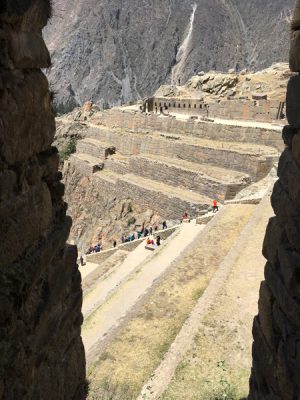
Apart from Machu Picchu, Ollantaytambo is the most popular site in the valley. The town itself is a compact centre set at the conflux of two river valleys. It has the distinction of being the only Inca town that has been continuously inhabited since the days of the empire. Farmers still use the old stone terraces first built by the Incas, and many people live in the stone buildings, drawing a direct connection between then and now. The town is also the location of the valley’s main train station, which carries travellers to Aguas Calientes and Machu Picchu every 25 minutes or so.
It’s worth strolling the Plaza de Armas and the main streets of Ollantaytambo (although beware of the constant through-traffic), but the main attraction is the massive fortress and temple that sits on the hillside overlooking the town. Pachacutec Inca, who was emperor during the empire’s height in the 15th century, built the town and fortress and used it as one of his main fortifications in the valley. After the Spaniards invaded, the last leader of the Inca Empire, Manco Inca, used the fortress as a stronghold and successfully held off a Spanish attack during a key moment of the Incan resistance. Despite the success at Ollantaytambo, Manco Inca eventually retreated to Vilcabamba, which remained hidden in the Amazon Rainforest during the fall of the Inca Empire.
While the fortress has degraded with time (and the invading Spaniards did their best to raze it to the ground), it remains an impressive site. After entering the site, you’re greeted with a view of the stone terraces rising above you. After a steep climb up the steps (if you’re still acclimatizing to altitude, go at a slow pace), you’ll reach the top of the fortress where the sun temple used to sit. You can still see one of the main blocks of the temple, which bears remnants of carvings representing animals on its massive, polished stone. When on the top of the fortress, you can also spot the ruins of storehouses on the hill opposite you. Take some time to follow the stone walkways hugging the side of the cliff and reach rocky outcrops with other buildings and storehouses. Eventually, you’ll reach the fortress’s right flank and descend back to the ground, where you should take some time to see the intricate water systems meant to irrigate the terraces that still function today.
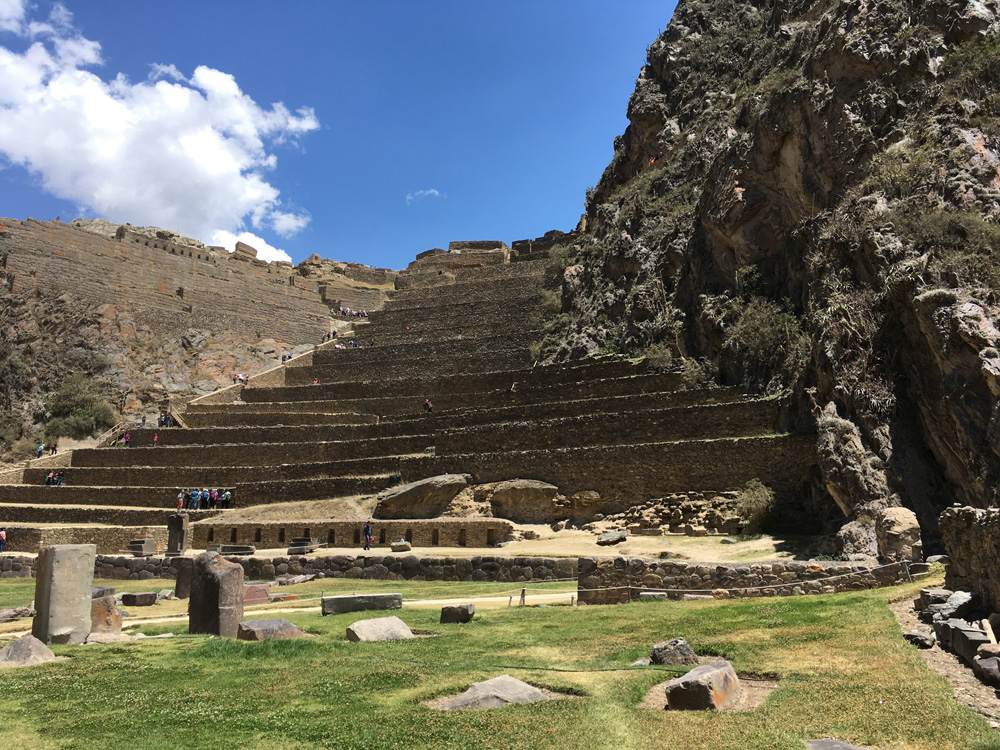
The Stunning Salineras de Maras
The Salineras or Salt Pans of Maras are among the most popular sites in the entire Sacred Valley. These fascinating, stark-white terraces sit along the edge of a cliff overlooking the Rio Urubamba and the Sacred Valley about 20 minutes southwest of the town of Urubamba. While they may look like crypts or painted squares from a distance, in fact, these terraces are salt pans used to extract salt from the waters of an underground stream.
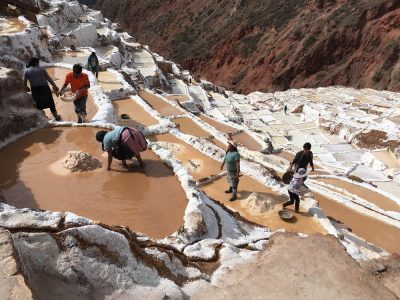
The local Andean people have been using these salt pans since pre-Inca times. The pans work by diverting a naturally-salty stream of water coming from the mountain into a series of small terraces on the edge of the mountain. The water then sits within the terrace and is exposed to the sun, which evaporates the majority of the water over the course of several days, leaving behind nothing but the salt. The local people then gather the salt, purify it at a nearby factory, and sell it as a popular item to local Peruvians and visitors alike, as well as shipping it for sale in other countries (the salt is especially popular in Germany). After gathering all the salt, the workers then clean the pan and refill it with water, starting the whole process over again. While the salt pans are only usable during the dry season, they help raise a moderate income for the local people and supplement them during the winter months when farming isn’t possible.
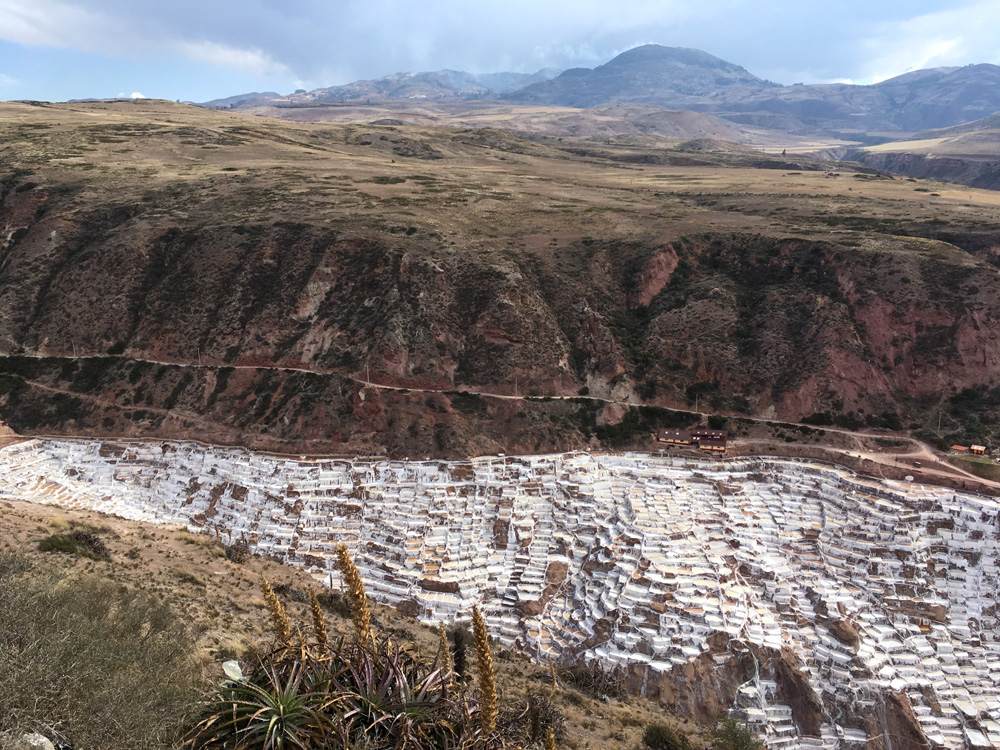
It’s easy to find the salt pans since they’re visible from the valley below. You pay a small entrance fee to the local villagers who maintain them and then follow the cliff-side road that hugs the mountain to eventually reach the pans themselves. The road is extremely narrow in points, often only as wide as one car width, so be sure you’ve hired a trusted driver when visiting. Once you get to the salt pans, you can follow a path hugging the cliff to the left of them and admire their striking appearance, as well as the villagers working on the specific pans they own and maintain. There are also some vendors near the entrance selling varieties of the salt collected here so it’s easy and inexpensive to grab some as a souvenir to take back home. Even if you’re not fascinated by the process of extracting the salt, the sight of the pans alone is worth a visit on Peru tours. You’re unlikely to come across anything as unique and striking during your travels.
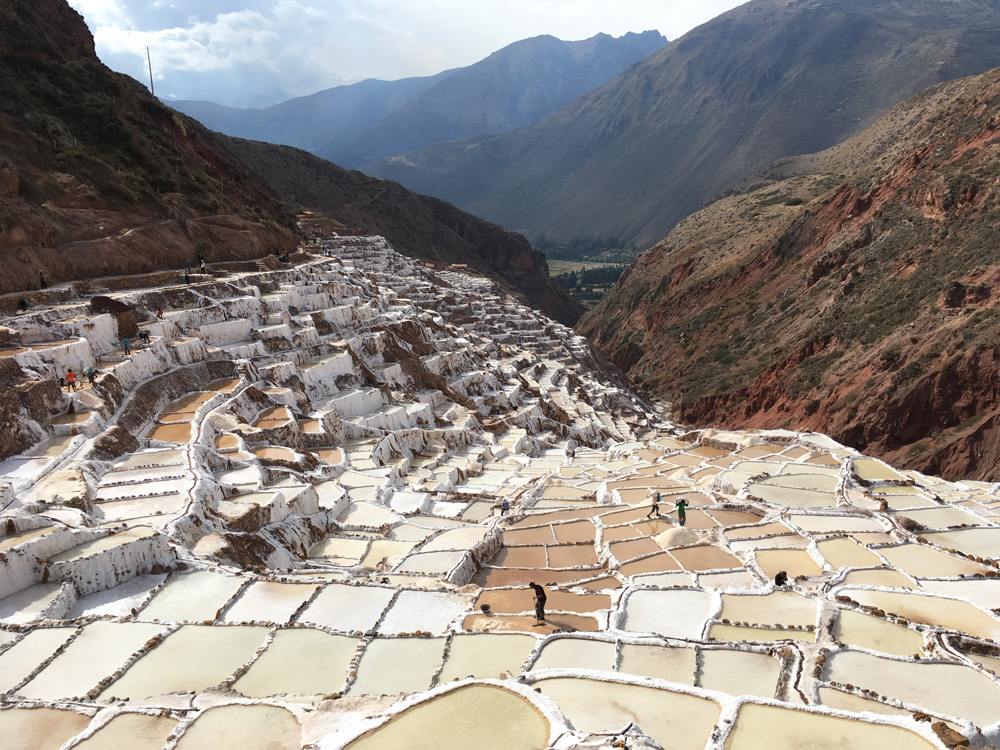
Moray Agricultural Terraces
You’ll find the agricultural terraces of Moray not too far from the town of Maras and the salt pans. These concentric terraces were built by the Inca to test out agricultural practices at a variety of elevations and temperatures. While many historical empires counted their wealth in gold or natural resources, the Inca Empire’s power was in its agriculture. They’d trade food with neighbouring powers and used crops as the measure of their wealth. Although they did mine gold and other precious metals, they used them merely as decoration instead of as means of currency. Thus, mastering agriculture was central to the Inca Empire’s power.
Understanding that the different levels of the Moray terraces created microclimates with different temperatures and elevations, the Inca could create specialty breeds of their crops and utilize those breeds when creating settlements at the various elevations and climates throughout the Sacred Valley. Thus, the Moray terraces are not only stunning sights, but also examples of the sophistication and scientific knowledge of the Inca Empire at its height.
When you visit Moray on Peru tours, you’ll find three circular terraces in close proximity to each other. Only one terrace has been completely restored while the other two are waiting on UNESCO approval and government funds to proceed with their restoration. Nevertheless, even the deteriorated terraces are fascinating to see.
There are designated paths that take you overtop and alongside the terraces, although you can’t actually walk on the terraces themselves. (Although you used to be able to walk into the bowls themselves, the impact of so many visitors sped up the processes of erosion and deterioration, forcing authorities to restrict access to everyone but archaeologists.) That said, they’re still absolutely worth visiting, not only for their incredible design, but also to appreciate the fascinating science behind their development.
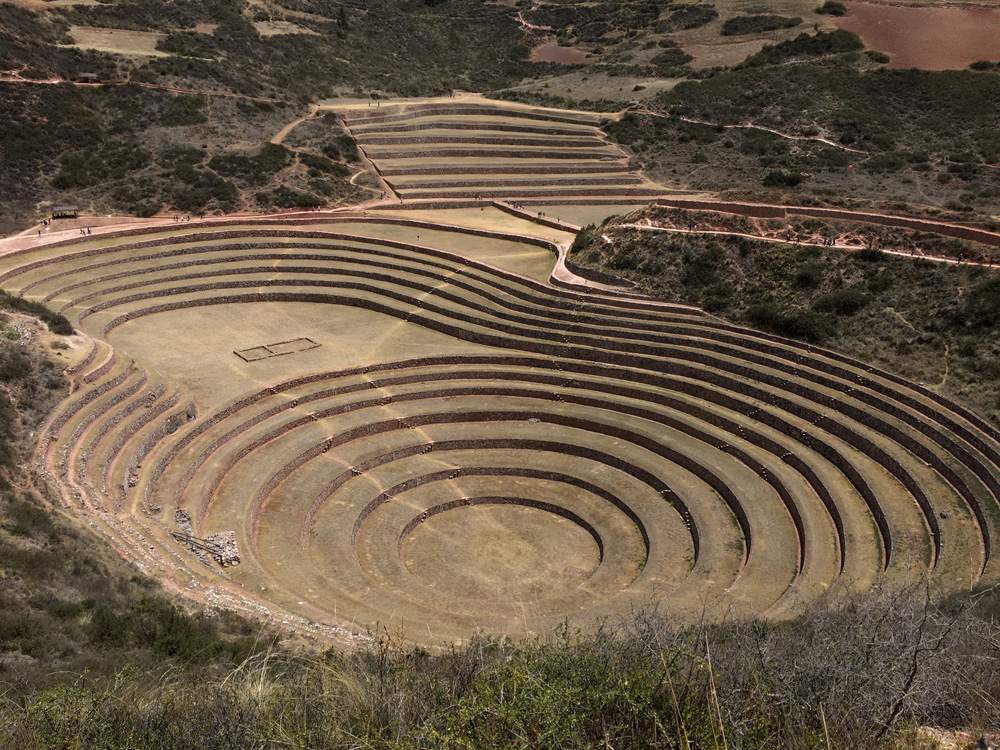
Other Ruins and Adventure Opportunities
I only stopped briefly in Chinchero and didn’t have the time to visit Pisac, but both of these sites deserve some attention in the Sacred Valley. Chinchero is home to the most famous textile markets in the Sacred Valley, where you can see Andean women hand-weaving rugs and scarves and barter for some of these incredible fabrics made from alpaca wool. In Pisac, you can explore the citadel ruins on the hilltop and see the fascinating stone called the Intihuatana, which was possibly an ancient sundial.
The Sacred Valley is about more than ruins. It’s also a great spot for adventure tourism. My wife and I went on a mountain biking excursion while in the valley, which took us from the hills around Huaypo Lake to right outside Maras. Biking uphill was a bit of a struggle while dealing with high altitude, but the struggle was worth it to see the magnificent vistas and sleepy villages we passed through. If you want a bit more excitement than mountain biking, you can do white water rafting along the Rio Urubamba or go rock climbing along some choice boulder faces.
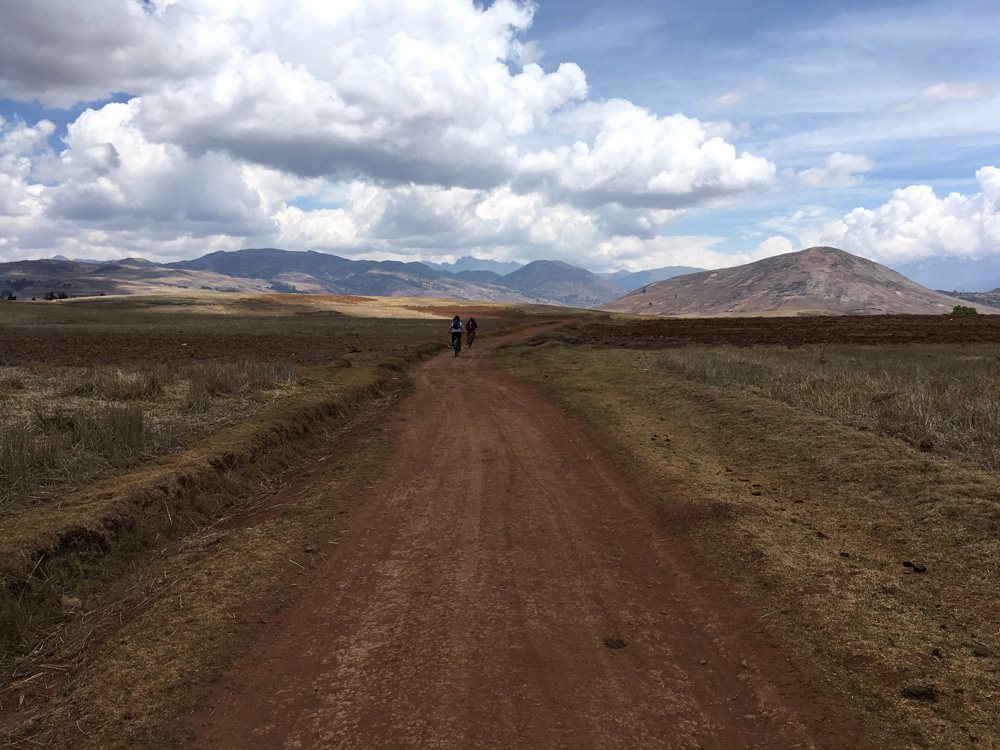
If you’re wanting to experience the ultimate rush, you should consider staying in one of the Skylodge Adventure Suites, which are luxury hotel rooms suspended from the side of the cliff in the Sacred Valley between Ollantaytambo and Urubamba. You have to use ladders and ropes to ascend the mountain to reach the lodges and can then use a zip-line to descend back to the ground. While I could never stay in the Sky Lodges due to my fear of heights, others who have no problem with sleeping on the side of a mountain should consider staying at least a night, as it offers an experience like no other.
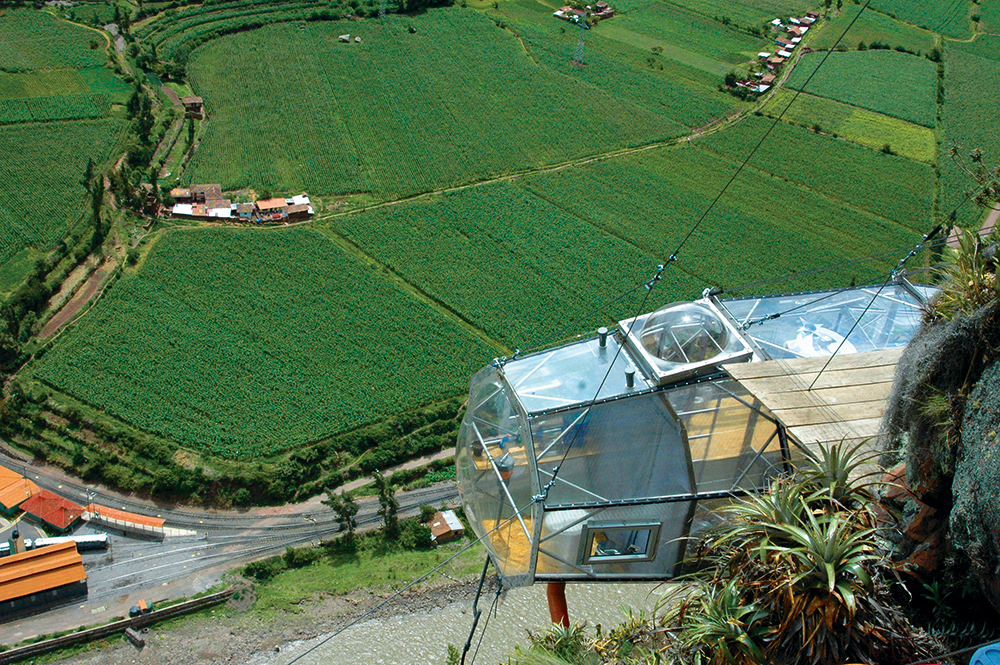
Peru tours offer so much to see and do in the Sacred Valley of the Incas in addition to hiking the Inca Trail and seeing Machu Picchu. It’s a fascinating natural landscape with friendly people and a wealth of archaeological sites to explore. If you have the time, give yourself at least a few days in between visits to Cusco and Machu Picchu to take advantage of this incredible region.
Get more travel inspiration by email.
Subscribe
0 Comments

Get the latest travel trends & hear about the best deals on vacations around the world.
If you’re a Globetrotter, these are the newsletters for you!

